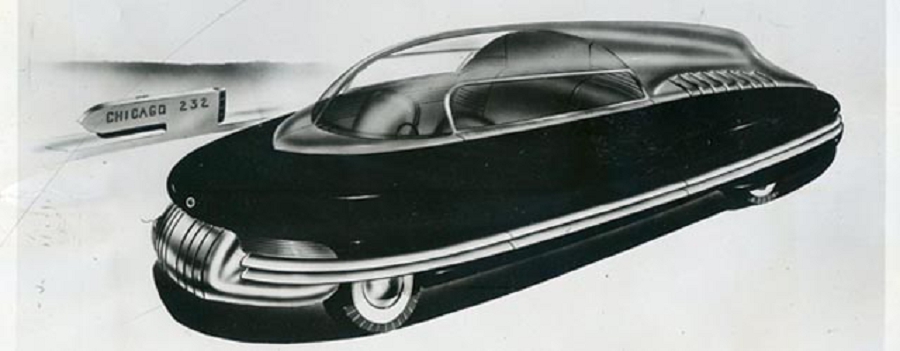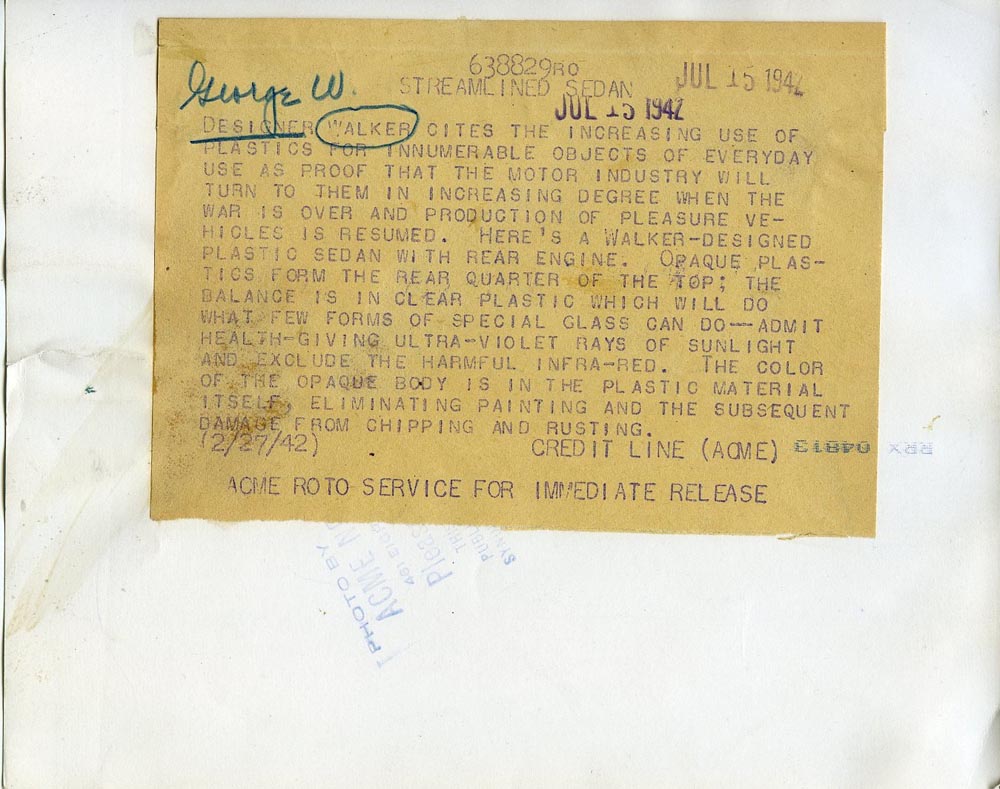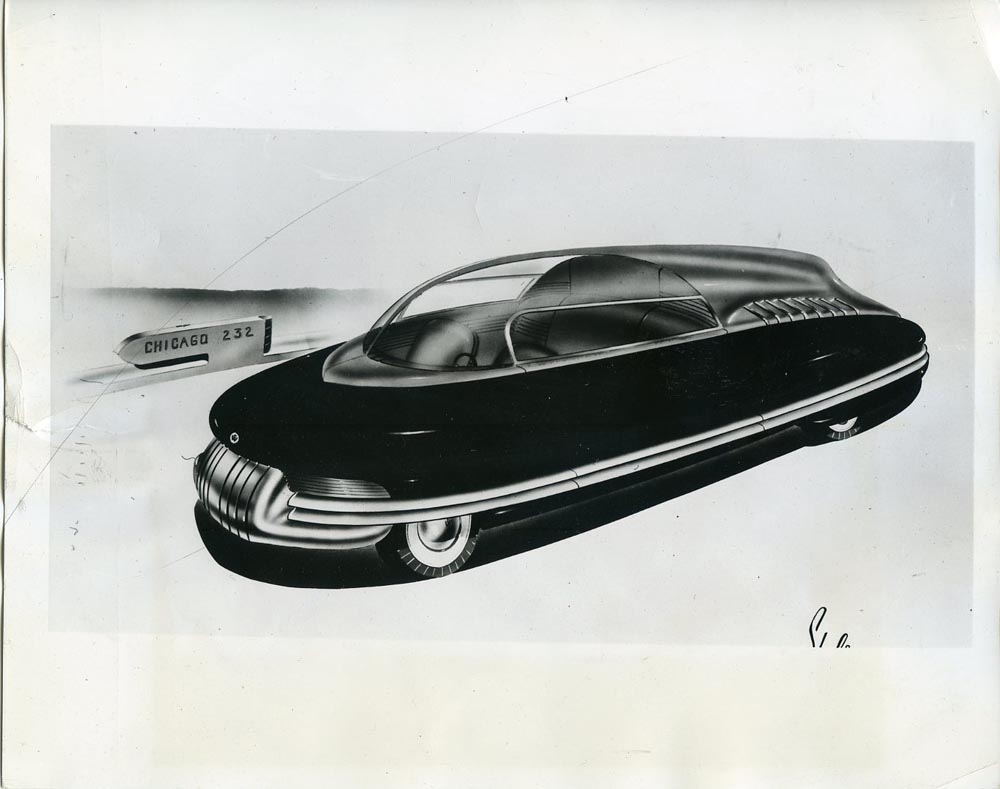
Hi Gang…
“Plastics.” That was the work we heard in the 1967 film “The Graduate.” But that word was being used for fiberglass or “plastic” bodied cars for nearly three decades before.
Case in point. In today’s story we focus on a press release and concept drawing of “streamlined sedan” – one intended to be built out of plastic. Let’s see what the press release had to say.
Streamlined Sedan
February 27, 1942
Designer George W. Walker cites the increasing use of plastics for innumerable objects of everyday use as proof that the motor industry will turn to them in increasing degree when the war is over and production of pleasure vehicles is resumed.
Here’s a Walker-designed plastic sedan with rear engine. Opaque plastics form the rear quarter of the top; the balance is in clear plastic which will do what few forms of special glass can do – admin health-giving ultra-violet rays of sunlight and exclude the harmful infra-red.
The color of the opaque body is in the plastic material itself, eliminating painting and the subsequent damage from chipping and rusting.

Summary:
So we have a few interesting observations and predications here. One is that the color of the body will be impregnated in the material – and they would have been exactly right, for this started to happen in the mid to late 1950s when fiberglass bodies were evolving in production methods and gelcoat with various colors began to be used.
However…I’m not sure about the health benefits touted in the press release. As I recall…sunlight is good for us up to a point. Getting dosed with UV rays….not my cup of tea – or coffee. *wink*
Hope you enjoyed the story, and until next time…
Glass on gang…
Geoff

Thanks Geoff. The car rendering in the B&W photo you show here was actually red with a tan interior. It was rear-engined and the trim down the sides was actually a full-length wrap-around bumper with a white rubber insert. I believe the crest on the front of the car was intended to look like a Packard crest, but there are no radiator cusps on this design.
The article in question was published in Esquire magazine for October, 1941. The title was “Plastically Speaking” and the entire piece was written by Clyde Vanderburg. Now, Mr. Vanderburg was Packard Motor Car Company Public Relations Director at the time.
The article was rather large with two pages of text. A third page showed/described eight plastic car designs by John Reinhart, Arthur Fitzpatrick and George Wallace. All in full color. The caption with the cars said “Plastic Makes Perfect.”
Of course, this was the very article that precipitated Packard’s intentions that were later manifested in the 1954 Packard Panther concept cars. All (four of them) were made out of fiberglass. Today, people look back and talk as if Packard suddenly stumbled onto the idea of making a plastic car in 1954. But in reality, PMCC was already talking about making plastic-bodied cars at least by 1941! Of course, World War II put the brakes on such advanced ideas so PMCC had to wait until the mid 1950s to actually show their stuff in fiberglass.
@Leon….your contributions never cease to amaze me. Thanks for your follow-up and comments. I’d love to see the story in Esquire if you are able to locate it. It would be a neat addition to our historical archives here on our website – and for our “Forgotten Fiberglass” book as well. Here’s hoping you locate the article and thanks, again, for your contribution. Geoff
Actually, this photo was part of a set of designs done by George Walker and Packard designer, John Reinhart. They were all featured in a magazine story predicting a future of plastic cars. This story appeared in Esquire magazine and was in full color (I have the original around someplace in my files).
What was never mentioned in the story was the fact that some of the cars were Packards. You could tell this from hints of Packard’s iconic “cusp” radiator tops on the front of several of the designs.